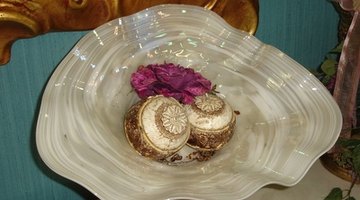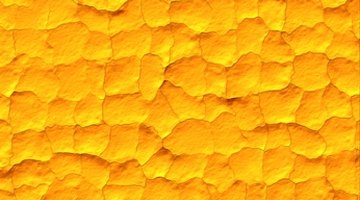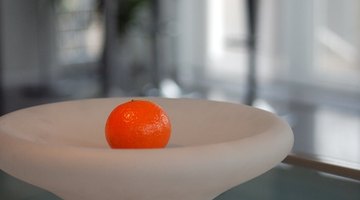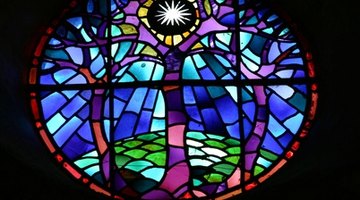Types of Opaque Glass
Glass is one of the oldest forms of art, dating back to about 3,500 years ago when sand was first melted and then cooled and molded into different shapes and forms for a variety of purposes. There are several hundred different forms of glass; opaque glass describes a category of translucent glasses impenetrable to light.
Blown


Invented around the year 50 B.C., blown glass was an alternative to forming glass from a core. Glass is blown into a mold and augmented with inlays of gold and bright colors. Glassblowers are able to work with the glass after it has been removed from the mold to form practical and decorative objects, such as vases, perfume bottles, beads and glassware.
Crackle

Also known as ice glass, craquelle glass and overshot glass, crackle glass was created by the Venetians in the 16th century. To create the look, glass is immersed in cold water while it's molten, which cracks the glass. It is reheated to seal the cracks and then either molded or hand-blown into the desired shape. Crackle glass is used in window panels, vases, pitchers, votives and glassware.
Frosted

Created by sandblasting or acid etching, frosted glass diffuses light and blurs out the clear surface of the glass, making it ideal for bathrooms, entry doors and window panels. Frosted glass windows may still need curtains or window treatments for full privacy, as the frosted effect does not entirely obscure the view.
Milk

Created in the 16th century, milk glass is an opaque white glass used to make plates, goblets, serving dishes, jugs, pitchers and decorative items. In the early 1900s, milk glass was a symbol of the style and taste of American households enjoying the fruits of the Gilded Age. The glass first became popular in France during the 1800s.
Stained

Consisting of pieces of colored glass held together in a latticed web of lead, stained glass is a decorative opaque glass that has been around since at least the 7th century, although it has since become an art form and hobby. Glass pieces in shades of green, blue, yellow, red, orange, purple and brown can be cut and melded into shapes, figures or even narratives to form stained glass.
References
Writer Bio
Based in Dayton, Ohio, Liza Martin began writing in 2005. Her work has appeared in "The Destin Log," "The Newark Advocate," Metromix, and in Columbus publications "City Scene Magazine," "Dublin Magazine," "Upper Arlington Magazine" and "Westerville Magazine." Her areas of expertise include education, music, literature, and health. Martin has a Bachelor of Arts in journalism from Ohio University.
Photo Credits
- glass image by cherie from Fotolia.com
- hand blown glass decor image by Jackie DeBusk from Fotolia.com
- crackle image by Dave from Fotolia.com
- Frosted beakers for vodka image by Galaiko Sergey from Fotolia.com
- deko image by DerSchmock from Fotolia.com
- Stained Glass Window image by Andrew Breeden from Fotolia.com
More Articles



